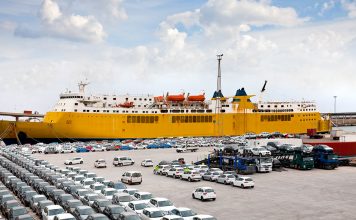Big public infrastructure investments have historically been received with cynicism due to the huge costs involved and the many years it may take for people to start realising the benefits.
Henry Labouchere, a radical British MP, dismissed the Uganda Railway as a ‘lunatic line’ in his brutal 1896 speech in parliament opposing the project.
“What it will cost no words can express; What is its object no brain can suppose; Where it will start from no one can guess; Where it is going nobody knows; What is the use of it none can conjecture; What it will carry there’s none can define,” he said.
Critics of President Uhuru Kenyatta’s foremost legacy project, the standard gauge railway (SGR), often flag the Sh357 billion borrowed from China to build it.
Low cargo volumes in the first few months of the launch of its freight service, attributed to transporters approaching it with caution, raised questions about whether it is value for money.
The cynicism is understandable though. A KPMG study of public infrastructure projects in the UK, Brazil, India and South Africa found that even governments, under pressure to deliver within political cycles, tended to take a narrow view of their value.
Their appraisal focused more on how much a project will cost or how it will be funded than the real economic benefits such as growth, jobs, land values and tax revenues.
“Traditional cost/benefit appraisal methodologies are too narrowly focused on an asset’s financial viability and almost always view projects in isolation,” says the KPMG report.
To his credit, President Kenyatta has taken a long-term view of the many infrastructure projects his administration is implementing across the country.
He has likened the criticisms of the SGR, for example, to the doubts around the old metre gauge Kenya-Uganda railway, which turned out to be a transformative project, driving the growth of cities and towns in the East African region, including Nairobi, Nakuru and Kisumu.
There are already indications that the SGR will in the long run spur a social and economic transformation of its own along the 609 kilometres from Mombasa to Naivasha.
But a good place to start is the Port of Mombasa. Like the old railway, the SGR was principally constructed to facilitate cargo movement into and from the port.
Indeed, it is difficult to imagine the state in which the Port of Mombasa would be today if the government hadn’t revamped the rail transport system.
The rail service, initially intended to share freight cargo with roads on a 70:30 ratio, had deteriorated to unbelievable levels.
Before the launch of SGR, cargo deliveries by road were over 90 percent due to decreased capacity of rail, run down infrastructure and rolling stock.
Port statistics show that cargo transported by rail was at its worst performance level in 2011, accounting for a paltry 4.9 percent.
The take-off of the SGR considerably reversed this trend.
Between January and September this year, a total of 3,069 trains carrying 293,747 twenty-foot equivalent unit (TEU) containers operated between the Port of Mombasa and the Inland Container Depot in Nairobi, according to the SGR performance records.
A maximum of 36 TEUs were transported on the old line per day in 2011 amid sporadic train service, derailments and a host of logistical challenges. The shifting of more cargo to SGR has eased traffic pressure on roads, reducing road carnage and export and import costs related to poor transit times.
The return trip of an estimated 3,000km to Kampala Uganda —Kenya’s biggest transit customer — has also been cut considerably.
Containers are now delivered ‘ex-hook’ — discharged directly from the ship and onto the train — to Nairobi Inland Container Depot.
This has improved cargo dwell and ship turnaround time and decongested the Port of Mombasa considerably.
The revitalised rail system couldn’t have come at a better time for the port. The growth in container traffic had recently outstripped the port’s capabilities.
Most seaports around the world build capacity ahead of demand. The Kenya Ports Authority (KPA) management has been undertaking a raft of projects meant to upgrade the port to a world class status.
The construction of the Kipevu Terminal in 2016 expanded the port’s container handling capacity by 550,000 TEUs, ramping up the port’s annual capacity from 1.05 million TEUs to 1.6 million TEUs.
The establishment of the Mombasa Port Community Charter at the instigation of the President saw the the number of cargo interveners reduced from 28 to four, which considerably cut down on the ships turnaround and cargo dwell time at the port.
The charter set key performance standards aimed at transforming the facility into a world class seaport. This was done almost concurrently with the dredging of the entry channel to the port deepening it to 14.5 metres to enable larger post-Panamax vessels to access the port and thereby remove the risk of the port slowly evolving into a feeder facility.
These developments have attracted an influx of mega vessels hitherto unseen in the East African maritime waters. The recent arrival of Mv MSC Maxine, the largest container carrier to dock at the Port with over 9,000 TEUs, marked a milestone in the regional shipping circles.
Initially standard vessels that frequented the port carried 4,500 TEUs and below.
With Africa being looked at favourably as the next economic frontier due to sustained growth and rising trade, infrastructure will continue to play a critical role in integrating Kenya into not only regional trade, but also the global economy.
SOURCE: https://www.businessdailyafrica.com/bd/opinion-analysis/ideas-debate/how-sgr-is-breathing-new-life-into-mombasa-port-3206700



![Top 20 Used Cars to Avoid Buying in Kenya – [PHOTOS]](../../../blog/wp-content/uploads/2013/11/top-used-unreliable-cars-to-avoid2-80x60.jpg)


![Top 20 Used Cars to Avoid Buying in Kenya – [PHOTOS]](../../../blog/wp-content/uploads/2013/11/top-used-unreliable-cars-to-avoid2-100x70.jpg)



